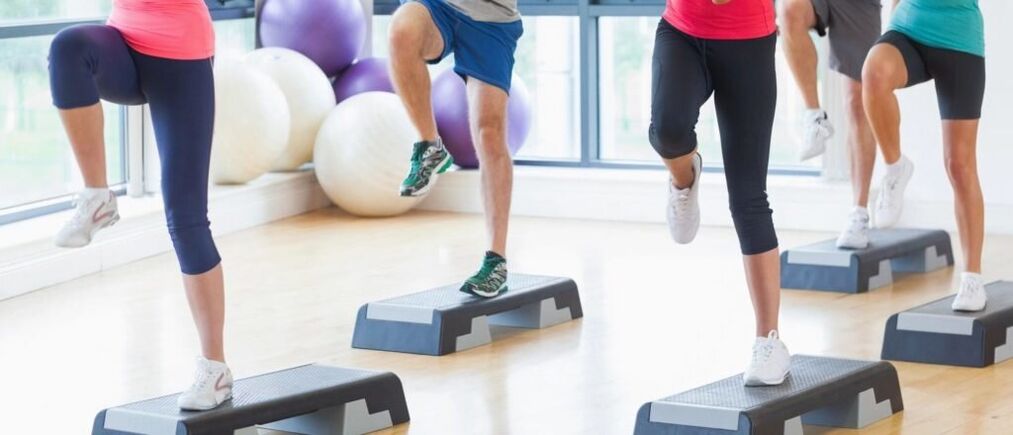Is it possible to do fitness with varicose veins? If you choose the right type and amount of physical activity, exercise will not harm your health and will not cause complications. In addition, with the help of fitness, you can improve your well-being and stop the disease.

With the diagnosis of varicose veins, you will need to train in compression underwear that straightens and supports problem veins. The attending physician should be informed of upcoming physical activity and it is desirable to work in the gym under the guidance of a professional instructor. If you approach the organization of training correctly, you can exercise without fear of aggravation of the disease.
Symptoms and causes of varicose veins
Varicose veins of the lower extremities are a common disease. It affects about a third of the population over the age of 25. In people with varicose veins, the venous vessels lose their elasticity, increase in size, change shape and bend. Deformed arteries are mainly located in the legs and back of the knee joint. Experts say that heredity plays an important role in the development of the disease, and it is almost impossible to completely protect yourself from the appearance of varicose veins.
If varicose veins are still impossible to prevent, should I exercise? In fact, physical activity is a good prevention of the disease. With their help, you can delay and slow down its development. Prerequisites for the appearance of varicose veins are obesity, poor posture and sedentary work, fitness helps to burn extra pounds, straighten your back and improve blood flow in the lower extremities.
Venous vascular training: a series of exercises
Therapeutic and prophylactic gymnastics against varicose veins consists of two exercises that are well known to fans of a healthy lifestyle - "scissors" and "bicycle". They are performed in a supine position. Using scissors, lift both legs or move them horizontally or vertically. At the same time, the legs are kept straight, the arms are placed along the body, breathing is not held. To simulate cycling, the arms are placed behind the head, the legs are bent and lifted. They make rotating movements with their feet, reminiscent of a bicycle pedal. The lower back should not protrude during operation. "Scissors" and "bicycle" stimulate venous blood and lymph flow in the lower body well.
The next exercise is also performed lying on the ground, but here you need a pillow - the legs are placed at an angle of about 20 degrees. One leg is bent at the knee and pulled to the chest, tying the foot tightly with the palm. Then slowly straighten the leg upwards, sliding the tightly squeezed hands along the calf to the knee joint. Similarly, slowly lower your legs and bring your palms along your thighs.
Vibrogymnastics stimulates venous blood flow well. When standing, they stand on their toes, raising their heels slightly off the ground (about one centimeter). Then the heels are lowered sharply, hitting them on the floor surface. Repeat 20-30 times, rest for no more than 10 seconds and take another approach.
Stages of varicose veins and acceptable types of physical activity
Strictly defined types of physical activity are allowed at different stages of varicose veins. The development of varicose veins begins with the appearance of the first nodular venous vessels visible through the skin. At this stage, it is allowed to engage in power simulators, minimizing the load on the legs. It is necessary to conduct a good warm-up and stretching. Cardio in the treadmill is not recommended.
In the next stage, the curly veins grow, in the evening the legs are noticeably swollen, they feel heaviness and aching pain. Patients with similar symptoms should forget about aerobic exercise with a shock load (running, stepping, jumping) on their feet. It is recommended to do water sports that stimulate blood flow through the arteries of the limbs, but do not overload them. Useful fitness areas where inverted postures (yoga, Pilates) are applied.
The third stage is characterized by severe swelling and darkening of the skin. You can swim and walk in warm water to increase blood circulation in the legs, but exercise should not be tiring.


















